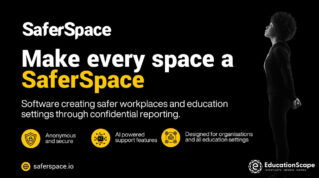At least two schools in England are reversing their plans to install facial recognition systems in their canteens after a Scottish council faced widespread criticism for its use of the technology.
Nine schools in North Ayrshire launched the biometric systems this week to allow pupils to make contactless payments for their lunches.
The move sparked a backlash from campaigners and prompted the UK’s data privacy watchdog to make enquiries and advise schools to use a “less intrusive approach”.
This advice has led to schools in England rethinking their approach.
‘We weren’t aware of the advice’
CRB Cunninghams, the cashless catering company, is behind the scheme in Scotland, but also provides facial recognition technology to 27 English schools.
Another 16 schools were preparing to go live with the system, but Schools Week understands two have pulled out and opted to use fingerprint technology.
Great Academy Ashton, in Ashton-under-Lyne, had planned to roll out facial recognition systems after half-term and had parental consent from all pupils. It currently uses fingerprint technology to increase speed of purchase and reduce cash handling.
This week the Information Commissioner’s Office (ICO) warned that “organisations need to carefully consider the necessity and proportionality of collecting biometric data before they do so”.
Schools should consider “using a different approach if the same goal can be achieved in a less intrusive manner”.
David Waugh, the head of Great Academy Ashton, said: “The ICO is saying it’s essentially overkill in terms of data security and the use of facial recognition as a data source for catering in schools.
“Because I’ve now been made aware of the [views of] the ICO we’re obviously acting upon that.”
Backlash against ‘border-style’ checks
There are wider concerns, too.
Silkie Carlo, a director of Big Brother Watch, said no child should go through “border-style identity checks” to get a school meal…“this is highly sensitive, personal data that children should be taught to protect.”
David Swanston, CRB Cunninghams’ managing director, confirmed a second school had also decided to revert to the fingerprint system.
“We went through the same thing when we introduced fingerprints until people realised it was completely contained in the school,” he said. CRB launched its fingerprints system in 2006, now used by about 2,000 schools.
“Fingerprints are normalised now… Everyone wants to be reassured that they’re doing the right thing.”
Swanston told Schools Week the facial recognition system was developed after schools requested an alternative no-touch biometrics solution because of fears over Covid. It was launched in June.
He understood the response of campaigners, but said: “You’ve got to take it for what it is being used for, and in this case it’s purely for ease for the user.”
Speed of processing pupils was a main driver, he added.
Biometric data ‘stored on secure database’
On data concerns, he said that pupil biometric data, in this case eight to 12 points on their face and the distance between them, was stored on a secure database and linked to a student number.
It was not a live scanning system, only picking up faces when the operator touched the screen.
Each database was unique to the school and usually stored on the school’s server. The data was not shared with any outside parties and biometric data was protected behind military grade encryption, Swanston said.
“It’s only used for cashless payments in a closed loop environment . . . all it does is link a person to their account in the school.”
Under the Protections of Freedoms Act 2012 schools must seek consent from parents of pupils under the age of 18 if they wish to use the child’s biometric data.
It costs up to £12,000 for a school to install a fingerprint biometrics system, plus up to £3,000 a year, depending on the size of the school and package ordered.
The Department for Education said it was up to schools whether they used facial recognition or other biometrics.
















Your thoughts